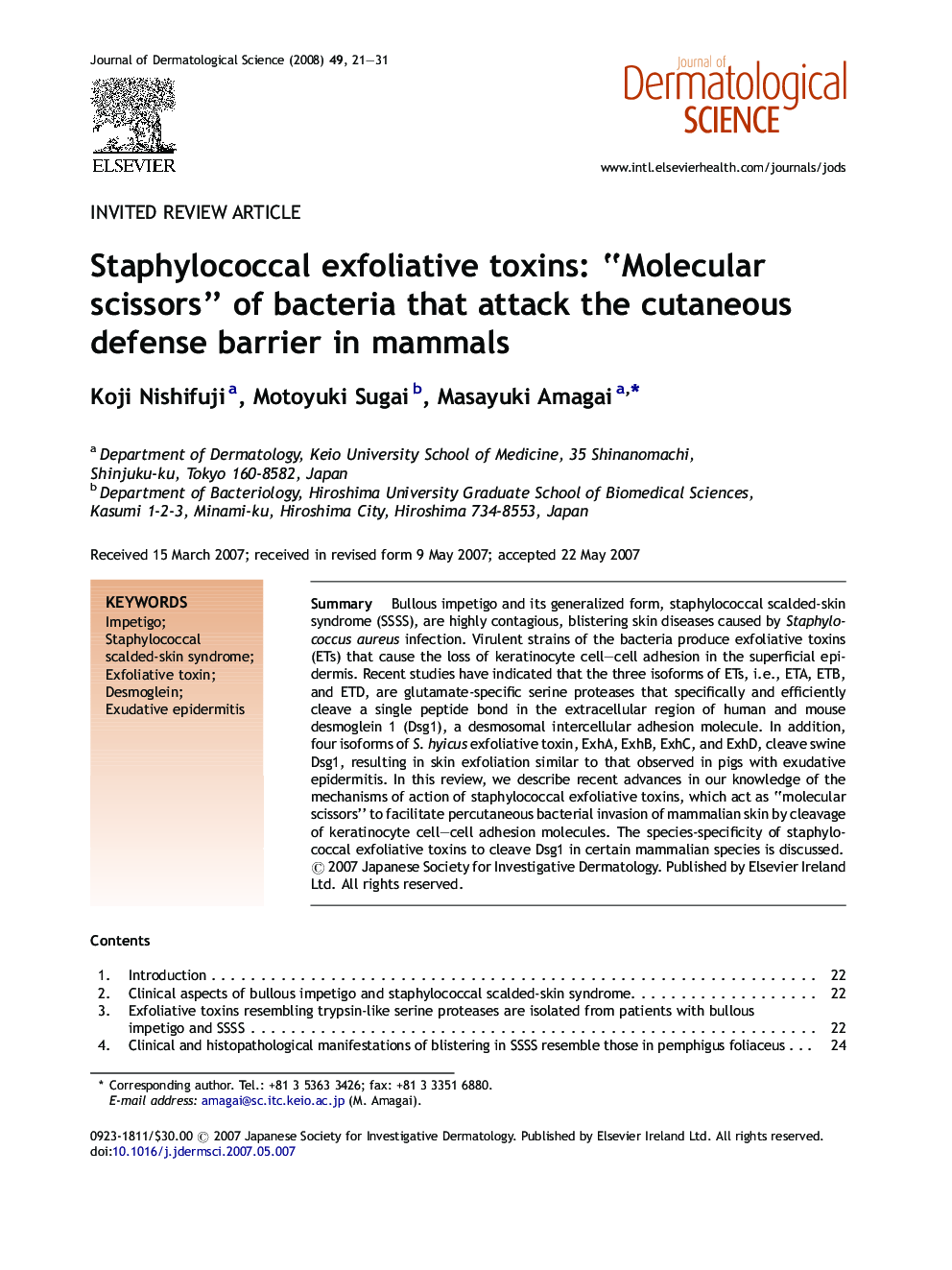| Article ID | Journal | Published Year | Pages | File Type |
|---|---|---|---|---|
| 3214320 | Journal of Dermatological Science | 2008 | 11 Pages |
SummaryBullous impetigo and its generalized form, staphylococcal scalded-skin syndrome (SSSS), are highly contagious, blistering skin diseases caused by Staphylococcus aureus infection. Virulent strains of the bacteria produce exfoliative toxins (ETs) that cause the loss of keratinocyte cell–cell adhesion in the superficial epidermis. Recent studies have indicated that the three isoforms of ETs, i.e., ETA, ETB, and ETD, are glutamate-specific serine proteases that specifically and efficiently cleave a single peptide bond in the extracellular region of human and mouse desmoglein 1 (Dsg1), a desmosomal intercellular adhesion molecule. In addition, four isoforms of S. hyicus exfoliative toxin, ExhA, ExhB, ExhC, and ExhD, cleave swine Dsg1, resulting in skin exfoliation similar to that observed in pigs with exudative epidermitis. In this review, we describe recent advances in our knowledge of the mechanisms of action of staphylococcal exfoliative toxins, which act as “molecular scissors” to facilitate percutaneous bacterial invasion of mammalian skin by cleavage of keratinocyte cell–cell adhesion molecules. The species-specificity of staphylococcal exfoliative toxins to cleave Dsg1 in certain mammalian species is discussed.
